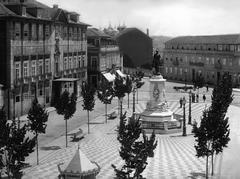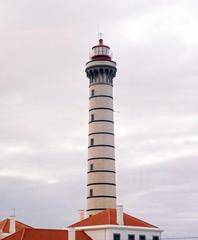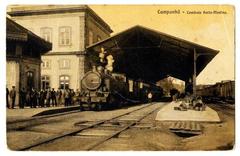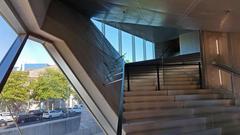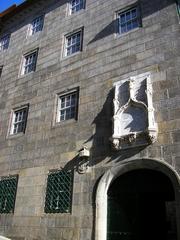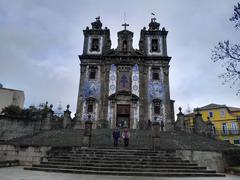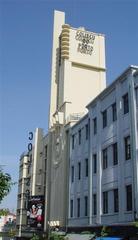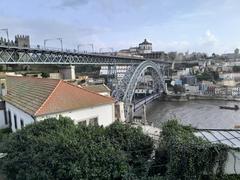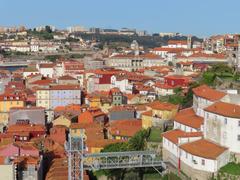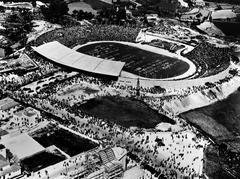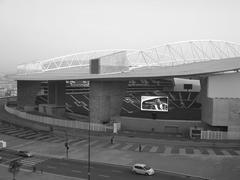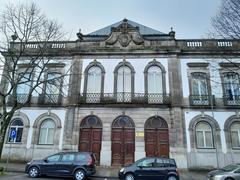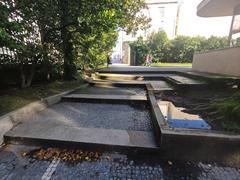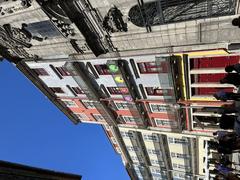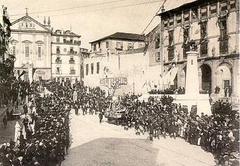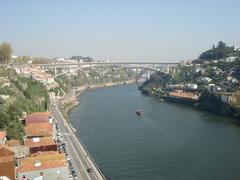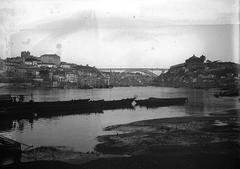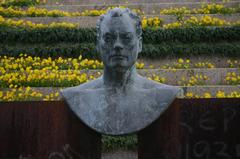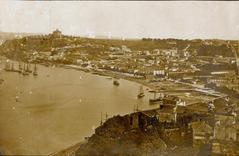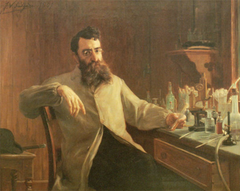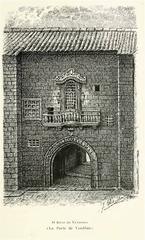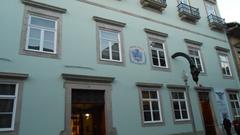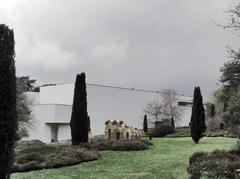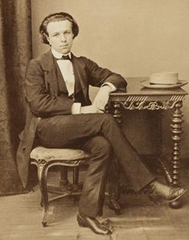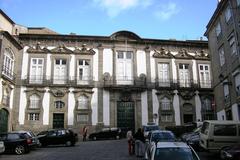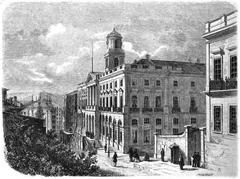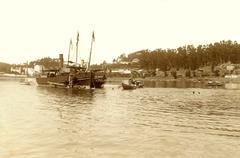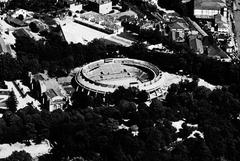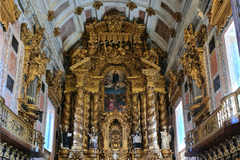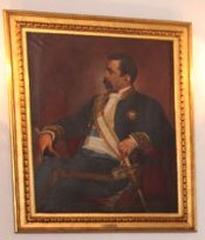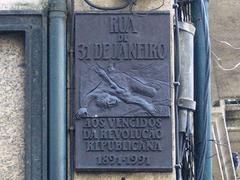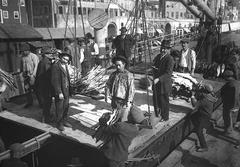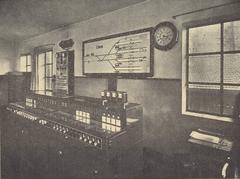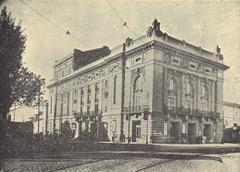Visiting Hours, Tickets, and Historical Significance of Farol de São Miguel-o-Anjo, Porto, Portugal
Date: 24/07/2024
Introduction
Discover the rich maritime history of Porto by embarking on a journey to Farol de São Miguel-o-Anjo. As the oldest existing lighthouse in Portugal and one of the oldest in Europe, this monument offers visitors an immersive experience into the region’s nautical past. Situated above the mouth of the Douro River in the Foz do Douro district, the lighthouse is not only an architectural gem but also a symbol of the innovative spirit of the Renaissance period. Designed by Italian architect Francesco da Cremona and completed in 1538, the structure originally served a dual purpose as both a chapel and a lighthouse, guiding seafarers safely through the treacherous waters of the Douro River (Everything Explained Today). This comprehensive guide aims to provide you with essential information on planning your visit, including ticket prices, visiting hours, nearby attractions, and travel tips. Whether you’re a history enthusiast, architecture lover, or curious traveler, Farol de São Miguel-o-Anjo promises a rewarding experience that intertwines historical significance with cultural impact.
Table of Contents
- Introduction
- History of Farol de São Miguel-o-Anjo
- Visiting Information
- Significance in Maritime Navigation
- Cultural and Historical Impact
- Modern-Day Relevance
- Preservation and Protection
- Frequently Asked Questions (FAQ)
- Conclusion
History of Farol de São Miguel-o-Anjo
Early Beginnings and Construction
Located in the civil parish of Aldoar, Foz do Douro e Nevogilde in Porto, Portugal, the Farol de São Miguel-o-Anjo stands as a testament to the maritime history of the region. Designed by Italian architect Francesco da Cremona and completed in 1538, the lighthouse is the oldest existing lighthouse in Portugal (Everything Explained Today).
In 1528, D. Miguel da Silva, the bishop-elect of Viseu, commissioned the construction of the chapel of São Miguel-o-Anjo. This chapel served a dual purpose—as a place of worship and as a lighthouse to aid navigation. The exterior wall facing the river features a sculpted relief inscription commemorating this dual function. The inscription reads:
“Miguel da Silva, Bishop-Elect of Viseu, made this tower to govern the entrance for ships and gave and conceded purchased lands with his money to, respecting income, they light the tower with perpetual fires. Year 1528” (Everything Explained Today).
Architectural Features
Situated above the mouth of the Douro River, adjacent to the garden of Passeio Alegre, the lighthouse includes a rectangular tower with a small patio guarded by granite barriers. The interior plan is octagonal, featuring three niches on the wall oriented towards the river. The main tower includes a vaulted-ceiling cupola painted white, surrounded by an iron railing that replaced the original balustrade. Access to the cupola is provided by a lateral spiral staircase (Everything Explained Today).
Evolution and Usage Over Centuries
By the 18th century, the chapel began serving as a conference hall for pilots along the Barra do Douro. Over the centuries, it underwent various transformations, including the construction of an annex in 1841 for the Fiscal Guard. The lighthouse was decommissioned in 1882, replaced by the Lighthouse of Senhora da Luz (Everything Explained Today).
In the 20th century, the chapel-lighthouse was repurposed as a meeting hall for the National Guard representing Foz do Douro. Despite these changes, it remains a point of interest for visitors and historians alike.
Visiting Information
Tickets and Visiting Hours
Travel Tips and Nearby Attractions
When planning your visit, consider exploring nearby attractions such as the Passeio Alegre garden, Forte de São João Baptista, and the Chafariz do Passeio Alegre. The lighthouse’s location along the Douro River makes it an ideal spot for photography and leisurely walks.
Accessibility
The lighthouse is accessible by public transportation, with several bus and tram lines stopping nearby. It is also wheelchair accessible, ensuring that all visitors can enjoy this historic site.
Significance in Maritime Navigation
Farol de São Miguel-o-Anjo played a crucial role in maritime navigation, guiding ships entering the Douro River. The perpetual fires lit from the tower provided reliable navigational aid, ensuring safe passage along the coastal waters.
Cultural and Historical Impact
The lighthouse is significant for its role in maritime navigation and its cultural and historical impact. It symbolizes the region’s rich maritime heritage and the efforts of early navigators and architects to ensure the safety of seafarers. Its dual-purpose design reflects the innovative thinking of the time.
Modern-Day Relevance
Today, Farol de São Miguel-o-Anjo is a cherished historical monument attracting tourists and history enthusiasts. Its architectural features and historical significance make it a must-visit site in Porto. The lighthouse’s inclusion in the Special Protection Zone ensures its preservation for future generations.
Preservation and Protection
The property came under the control of the Instituto Português do Património Arquitetónico (IPPA) on June 1, 1992. On April 15, 2008, the DRCNorte proposed allocating the site in the Special Protection Zone (ZEP) along with other historical landmarks. A similar proposal was made on September 12, 2011, to include it in the non aedificandi of the DRCNorte (Everything Explained Today).
Frequently Asked Questions (FAQ)
Q: What are the visiting hours for Farol de São Miguel-o-Anjo?
Q: How much are tickets to visit Farol de São Miguel-o-Anjo?
Q: What are some nearby attractions?
A: Nearby attractions include the Passeio Alegre garden, Forte de São João Baptista, and the Chafariz do Passeio Alegre.
Conclusion
Farol de São Miguel-o-Anjo is a remarkable historical structure that has played a significant role in maritime navigation. Its preservation is crucial for maintaining the historical integrity of the region and providing valuable insights into the past. Plan your visit today to explore this iconic piece of Porto’s maritime heritage.
For more information and updates, follow us on social media or download our mobile app Audiala.
